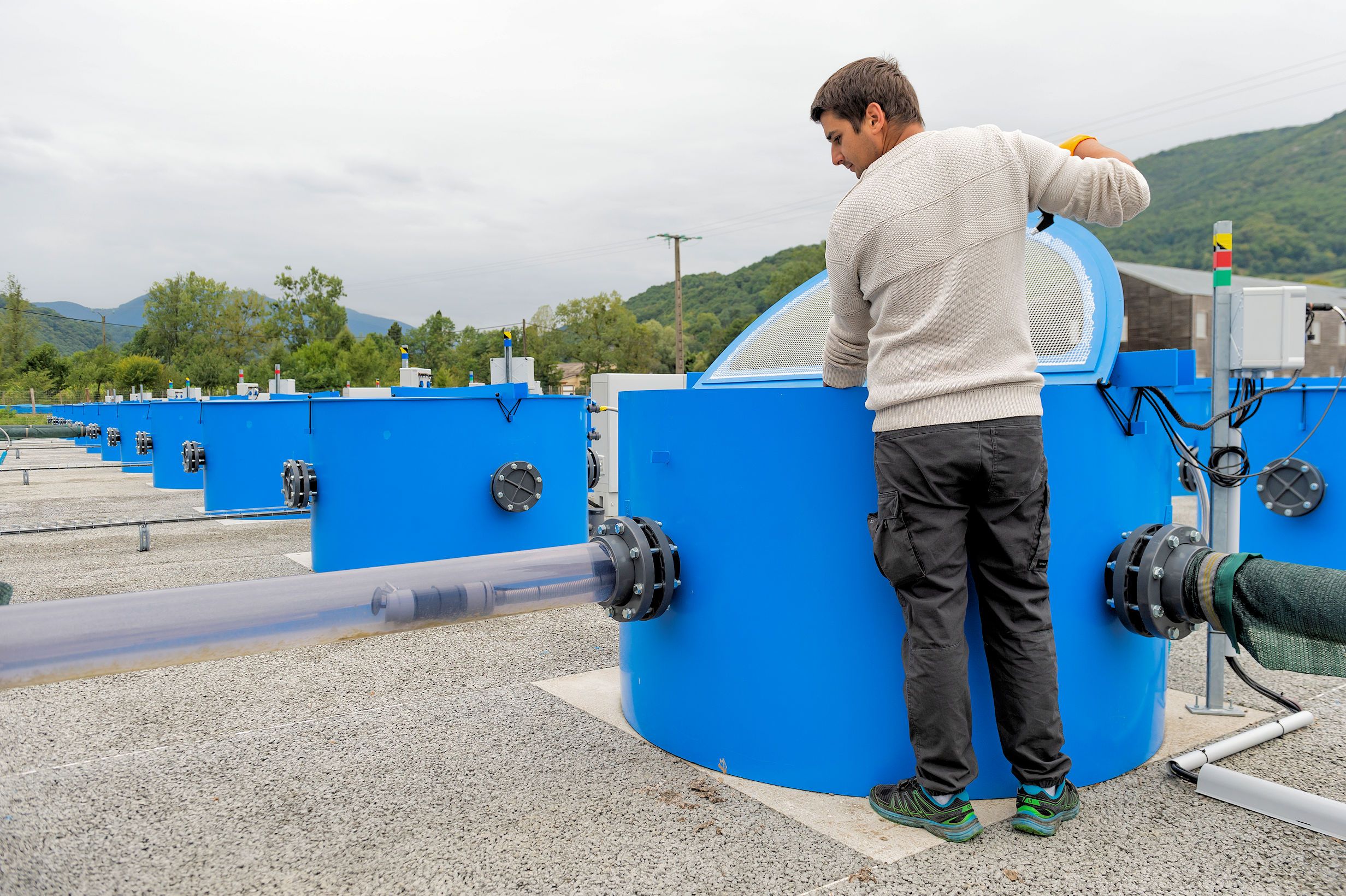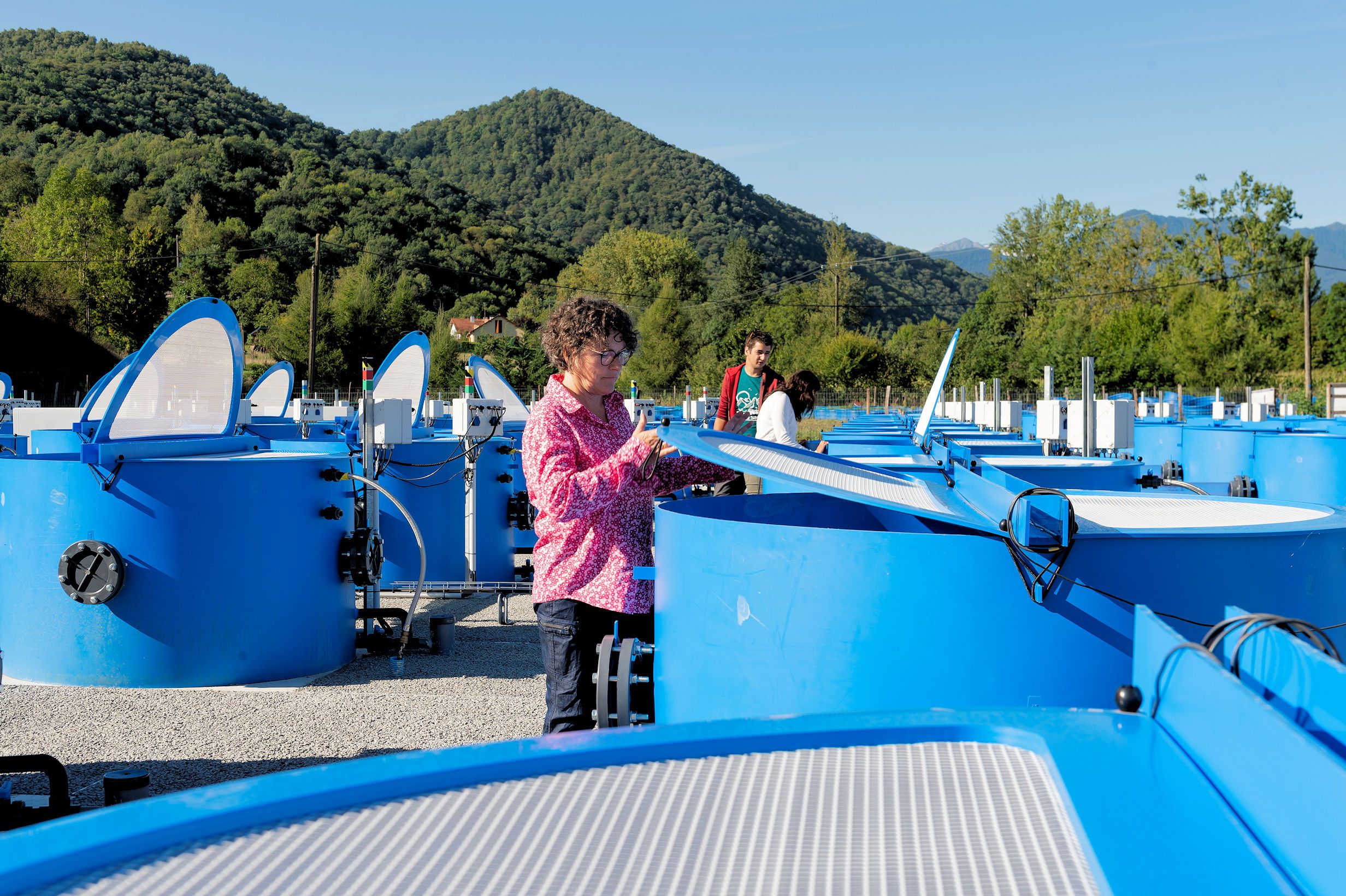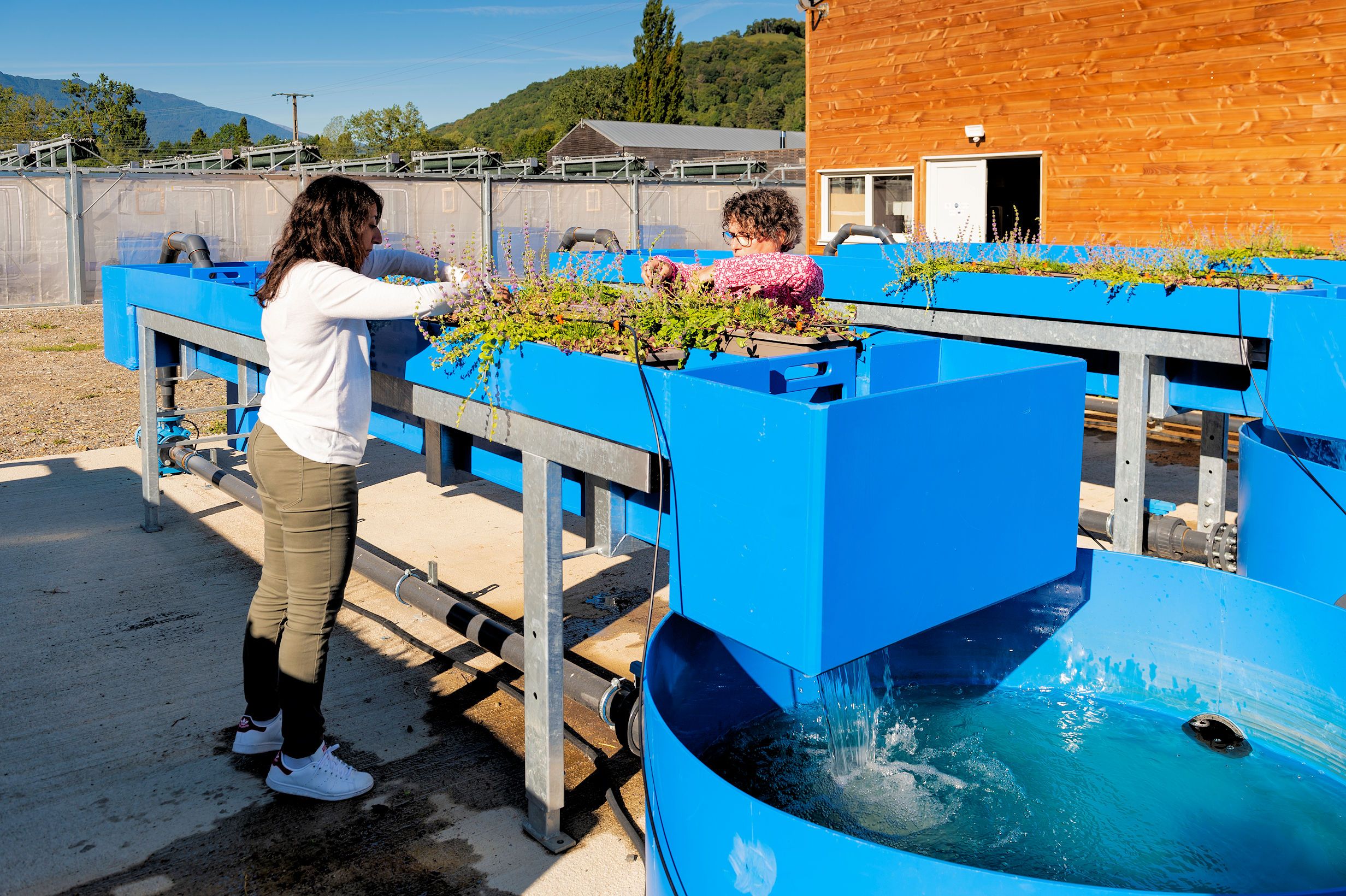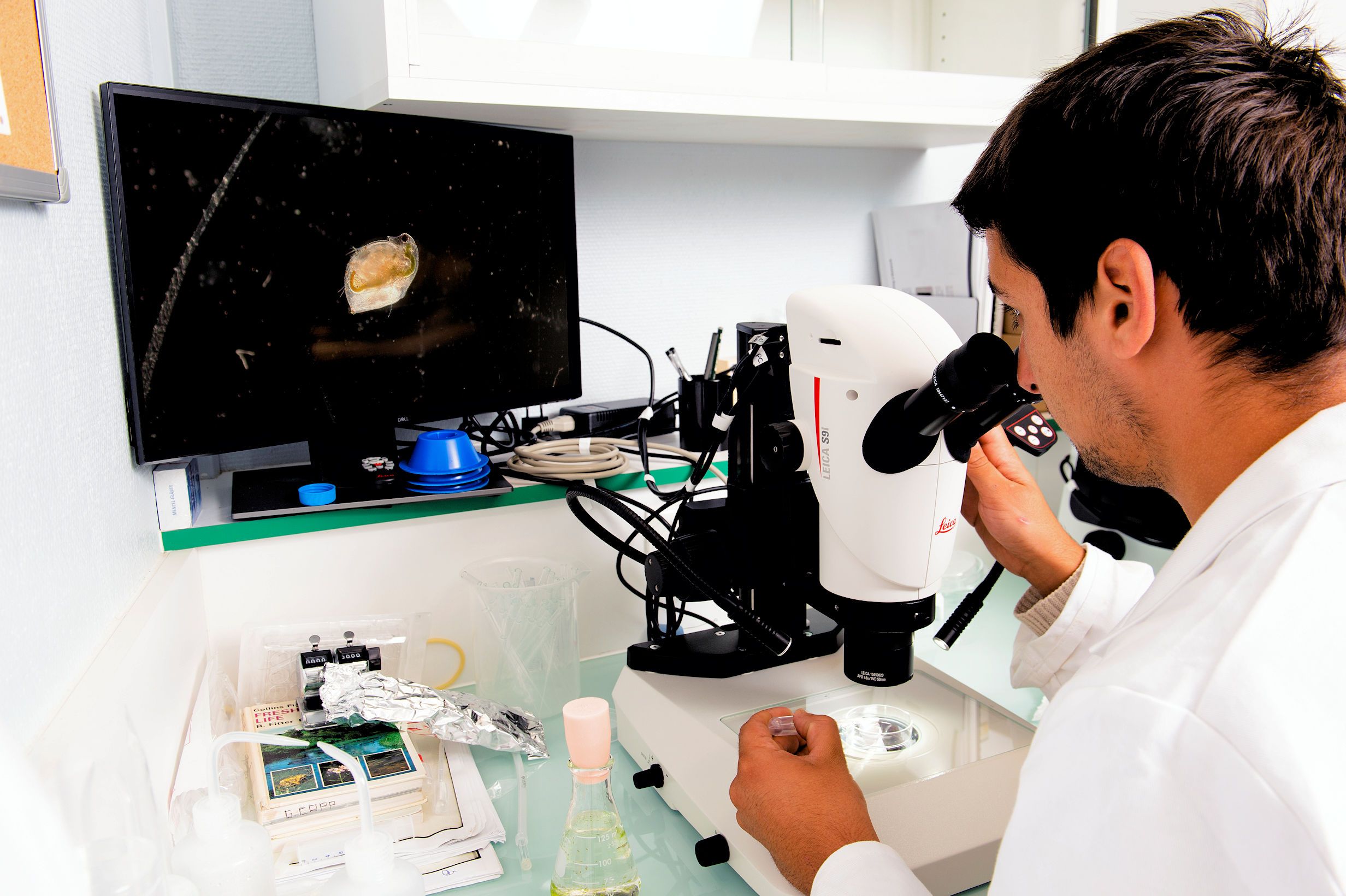Aquatic Metatron
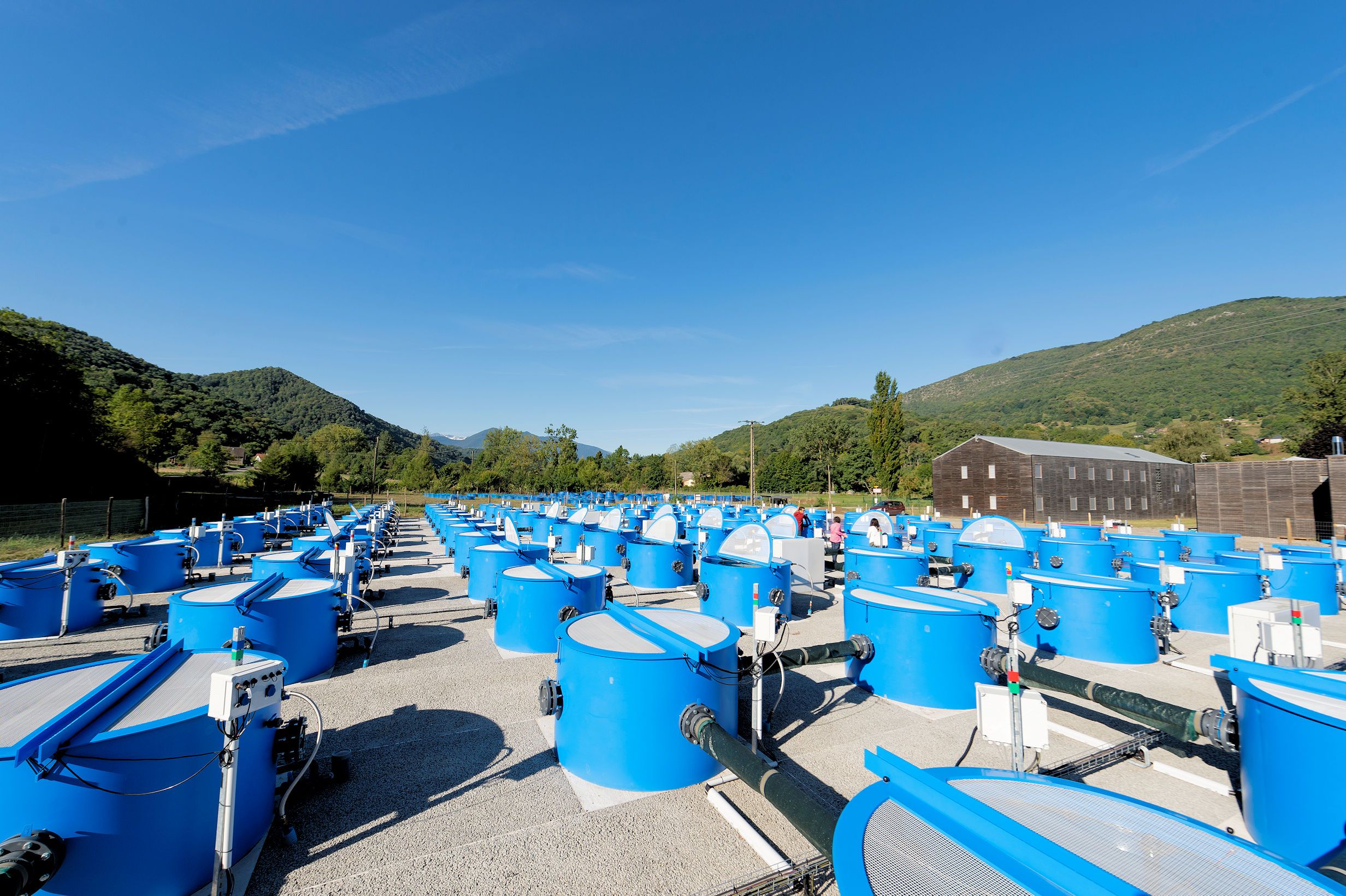
The Aquatic Metatron is an unprecedented experimental platform for research on species of freshwater aquatic environments.
General overview objectives of the platform
Understanding the interactions between spatial dynamics, evolutionary dynamics and biodiversity at all levels of organisation is essential to predict ecosystem functioning in the short and long term, particularly in the context of abrupt and global environmental changes.
The Aquatic Metatron is a unique device for simultaneously studying the effects of climate change (warming or cooling) and habitat fragmentation (aquatic and aerial) on the functioning of aquatic ecosystems.
The simultaneous change in habitat structure and temperature in aquatic environments is unique in the world. Platform monitoring allows for continuous measurements of ecosystem properties.
Facilities Description
The Aquatic Metatron consists of 3 experimental platforms.
- Lentic platform 1: 144 basins of 2 m3 each. Basins can be connected to each other to allow for the dispersal of aquatic organisms (i.e. aquatic corridors). This platform is connected to a supervisory station. A subset (currently 36) is covered by an aerial mesh that can be connected/disconnected via aerial corridors, thus allowing air control of dispersal (for aquatic species having an aerial stage in their cycle). In addition, each of the 144 basins can be equipped with heaters directly controlled an automated monitoring system, thus allowing accurate and independent temperature variation. A subset of 36 basins also includes a cooling system to adjust the temperature downwards. Finally, the platform allows continuous recording of several parameters such as oxygen concentration, pH, conductivity or chlorophyll a concentration.
- Lentic platform 2: It consists of 150 circular basins of 1.3 m3 and 72 basins of 350 litres each. These are not connected and no temperature regulation is yet provided. In particular, they allow the manipulation of biodiversity or the physical structure of the habitat in a large number of replicates.
- Lotic platform 3: It consists of 12 rivers 4 m long, 30 cm deep and 30 cm wide. The flow rate of each river can be varied, allowing the depth-speed torque to be modulated by means of variable valve valves. An alternation of pool-root habitats can thus be established. In addition, the banks can be vegetated (20 cm on each side of the river).
All platforms use water derived from the Lez River, and this water can be used directly, filtered, and/or UV-sterilised.
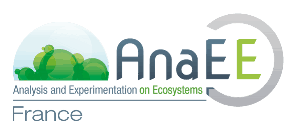
The Aquatic Metatron is one of the services provided by the research infrastructure AnaEE France for experimental manipulation of managed and unmanaged terrestrial and aquatic ecosystems. www.anaee-france.fr/en/


